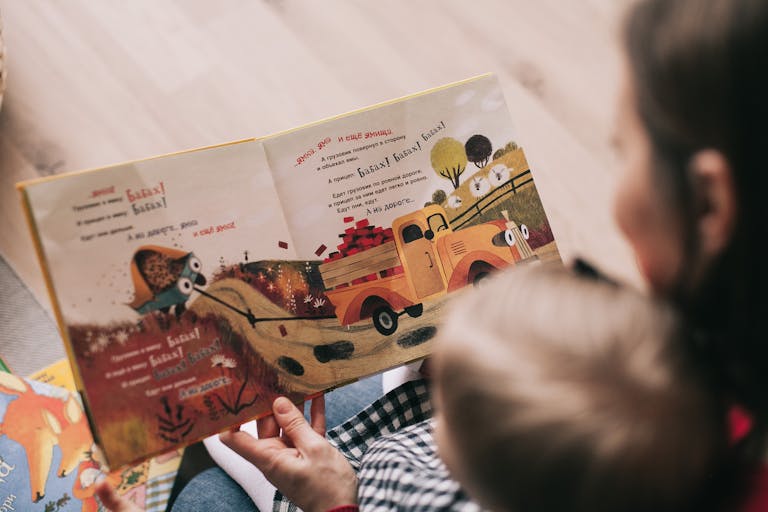Key Takeaways
- Daily reading improves academic performance and life skills.
- Establishing a reading routine is crucial for habit formation.
- Creating a cozy reading nook makes reading more enjoyable.
- Parents should model positive reading behaviors.
- Interactive and engaging reading experiences motivate children.
Top 5 Ways to Make Reading a Daily Habit for Your Kids
Importance of Daily Reading
Reading daily is more than just an academic exercise; it’s a gateway to a world of knowledge and imagination. When kids read every day, they develop critical thinking skills, improve their vocabulary, and enhance their understanding of different cultures and perspectives. Most importantly, reading helps children build empathy by putting themselves in the shoes of different characters.
Positive Impact on Academic Performance and Life Skills
Regular reading has a profound impact on a child’s academic performance. Studies have shown that children who read daily perform better in school, especially in subjects like language arts and social studies. Besides that, reading cultivates essential life skills such as problem-solving, concentration, and emotional intelligence.
Creating a Reading Routine
One of the most effective ways to make reading a daily habit is by creating a consistent reading routine. By setting aside specific times each day for reading, you can help your child develop a lifelong love for books.
Set a Designated Reading Time Each Day
Setting a designated reading time each day is the first step in establishing a reading routine. This helps children understand that reading is a priority and not just an optional activity.
Choosing the Best Time
- Consider your child’s daily schedule and energy levels.
- Morning reading can set a positive tone for the day.
- Reading before bedtime can be a calming ritual.
Consistency and Habit Formation
Consistency is key when it comes to forming any habit, including reading. Stick to the designated reading time every day, even on weekends and holidays. This consistency will help your child see reading as a natural part of their daily routine.
Integrating Reading into Daily Activities
Reading doesn’t have to be confined to a specific time of day. You can integrate reading into various daily activities to make it more engaging and less of a chore. For instance, read recipes together while cooking, read road signs during car rides, or read instructions while building a toy.
Reading can be a delightful escape from the hustle and bustle of daily life. By creating a cozy reading nook, you provide a special space where your child can immerse themselves in a good book.
Create a Cozy Reading Nook
Having a dedicated space for reading can make the experience more enjoyable and inviting for your child. It doesn’t have to be elaborate; even a small corner can be transformed into a cozy reading nook with a bit of creativity.
Selecting the Right Spot
Choose a quiet, well-lit area in your home where your child can read without distractions. It could be a corner of their bedroom, a spot by the window, or even a small section of the living room. The key is to find a place that feels comfortable and inviting.
Comfort and Accessibility
Ensure the reading nook is comfortable and easily accessible. Add some soft cushions, a cozy blanket, and a good reading lamp. A small bookshelf or a basket of books within arm’s reach will make it easy for your child to grab a book and start reading whenever they want.
Personalization Tips
Let your child personalize their reading nook to make it feel like their own special space. They can add their favorite stuffed animals, posters, or other decorations. The more they feel ownership over the space, the more likely they are to use it regularly.
Lead by Example by Reading Yourself
Children often imitate the behavior of the adults around them. If they see you reading regularly, they are more likely to develop a reading habit themselves. Make it a point to read in front of your child and talk about what you’re reading.
Modeling Positive Behavior
Show your child that reading is a valuable and enjoyable activity. Talk about the books you’re reading, share interesting facts or stories, and express your excitement about finding new books. Your enthusiasm will be contagious.
Sharing Your Reading Experiences
Discuss the books you’re reading with your child and encourage them to share their thoughts about the books they’re reading. This can lead to meaningful conversations and help your child develop critical thinking skills.
Family Reading Sessions
Set aside time for family reading sessions where everyone reads together. You can take turns reading aloud, or each person can read their own book quietly. This not only reinforces the habit of reading but also creates a bonding experience for the whole family.
Make Reading a Fun and Interactive Experience
Reading should be an enjoyable activity, not a chore. By making reading fun and interactive, you can keep your child engaged and motivated to read every day.
Choosing Engaging Books
Select books that match your child’s interests and reading level. Whether it’s adventure stories, mysteries, or books about their favorite hobbies, finding the right books will keep them excited about reading. Let your child have a say in choosing the books they want to read.
Interactive Reading Activities
Incorporate activities that make reading more interactive. For example, you can create a treasure hunt based on a book’s storyline, act out scenes from a book, or make crafts related to the book’s theme. These activities make reading more dynamic and memorable.
Using Technology to Enhance Reading
In today’s digital age, there are many tools available to make reading more interactive. E-books, audiobooks, and reading apps can provide a different and engaging way to enjoy books. These tools can be especially helpful for reluctant readers or those with learning differences.
Use Rewards or Incentives to Motivate Consistent Reading
Sometimes, a little extra motivation can go a long way in encouraging your child to read regularly. Rewards or incentives can be effective tools to reinforce the habit of daily reading, especially in the initial stages.
Setting Up a Reward System
To set up a reward system, start by identifying what motivates your child. It could be extra screen time, a small toy, or a special outing. Once you know what they value, create a simple chart to track their reading progress.
For example, you can use stickers or checkmarks to mark each day your child reads. After reaching a certain number of stickers or checkmarks, they can earn a reward. This visual representation of their progress can be very motivating.
Different Types of Incentives
Incentives can be tangible or intangible. Here are some ideas:
- Extra screen time or a favorite TV show
- A trip to the park or a special outing
- Choosing a new book or toy
- A fun activity, like baking cookies or doing a craft project together
“When my daughter read for 30 minutes every day for a month, we celebrated with a family movie night. It made her feel accomplished and excited to keep reading.” – Sarah, mother of two
Balancing Rewards with Intrinsic Motivation
While rewards can be a great way to kickstart a reading habit, it’s essential to balance them with intrinsic motivation. Encourage your child to find joy in reading itself, rather than just reading for the sake of a reward. For more tips on developing good reading habits, check out this helpful guide.
One way to do this is by discussing the stories and characters they encounter in their books. Ask open-ended questions like, “What did you like about the story?” or “How do you think the character felt?” This helps your child connect with the material on a deeper level.
Over time, as your child begins to enjoy reading for its own sake, you can gradually reduce the frequency of rewards. The goal is to help them develop a genuine love for reading that will last a lifetime.
- Celebrate milestones with small rewards
- Encourage discussions about the books they read
- Gradually reduce rewards as intrinsic motivation grows
Frequently Asked Questions (FAQ)
Here are some common questions parents have about developing a daily reading habit for their kids:
What is the best age to start a daily reading habit?
It’s never too early to start! You can begin reading to your child from infancy. Babies respond to the soothing rhythm of your voice and the closeness of being read to. As they grow older, they will naturally develop an interest in books and reading.
How much time should my child spend reading each day?
The amount of time can vary depending on your child’s age and reading level. For young children, 15-20 minutes a day is a good starting point. As they get older and their reading skills improve, you can gradually increase this time to 30 minutes or more.
What types of books are best for encouraging daily reading?
Choose books that match your child’s interests and reading level. Picture books are great for younger children, while chapter books can engage older kids. Let your child have a say in selecting books, as they are more likely to read something they find interesting.







2 Comments